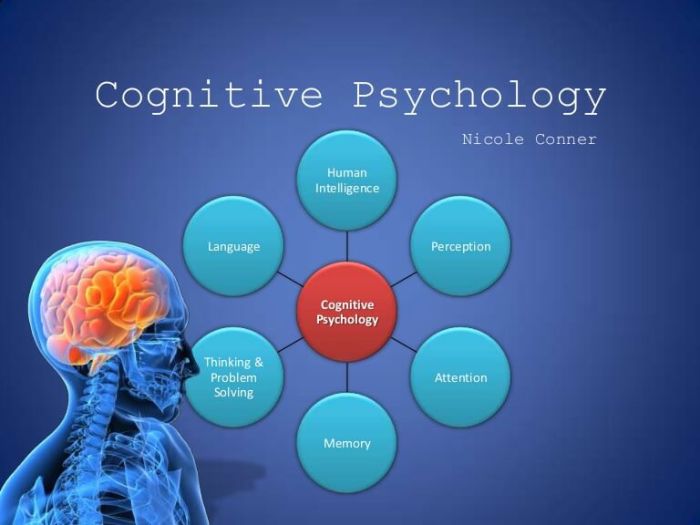How to influence people is a fascinating subject, encompassing everything from subtle persuasion to powerful leadership. This guide delves into the art of influencing others, exploring the strategies and techniques behind successful interactions. We’ll uncover the psychology behind influence, examining various approaches and their effectiveness. Understanding the nuances of communication, body language, and emotional intelligence will be key to mastering this intricate skill set.
From building credibility and trust to recognizing manipulative tactics, this comprehensive overview will equip you with the knowledge and tools to navigate the complex world of human interaction. We’ll explore real-world examples and case studies to illustrate how influence strategies have been applied across different industries and contexts.
Understanding Influence
Influence is the ability to affect someone’s behavior, thoughts, or feelings. It’s a powerful force that shapes our world, from the decisions we make in our personal lives to the policies that govern our societies. It’s crucial to distinguish influence from manipulation, which often involves deception or coercion. Understanding the various forms of influence, and the ethical considerations surrounding their use, is essential for navigating the complexities of human interaction effectively.Influence operates on a spectrum, ranging from subtle suggestions to overt demands.
It can be wielded consciously or unconsciously, and its impact can be both positive and negative. A deep understanding of the mechanisms behind influence allows us to leverage its power constructively while safeguarding ourselves from its potential misuse.
Defining Influence and Manipulation
Influence is the act of guiding or persuading someone toward a desired outcome. It involves the ability to inspire, motivate, and shape another person’s perspective or actions, without necessarily resorting to coercion or deception. Manipulation, on the other hand, is a form of influence that employs deception, coercion, or other underhanded tactics to achieve a specific outcome. A key distinction is the intent behind the action; influence aims for mutual benefit, while manipulation often seeks to exploit or control.
Forms of Influence
Influence manifests in various ways. Persuasion, a cornerstone of influence, involves presenting arguments and evidence to convince someone to adopt a specific viewpoint or action. Leadership, another powerful form of influence, involves inspiring and guiding others toward a shared goal. Social pressure, exerted by groups or communities, can also significantly influence individual behavior.
Examples of Influential Figures
Numerous figures across various fields have demonstrated remarkable influence. In politics, figures like Martin Luther King Jr. wielded immense influence through persuasive speeches and inspirational activism, shaping public opinion and driving social change. In business, entrepreneurs like Steve Jobs revolutionized industries through innovative products and compelling marketing strategies, inspiring countless others. In entertainment, artists like Beyoncé have captivated audiences with their talent and charisma, influencing fashion trends and popular culture.
Ethical Considerations
The use of influence raises critical ethical questions. While influence can be used to promote positive change, it can also be misused to manipulate or exploit others. It’s crucial to consider the potential consequences of our actions and strive to use influence ethically and responsibly. The core of ethical influence lies in respect for autonomy, transparency, and the well-being of those being influenced.
Comparison of Influence Tactics
| Type of Influence | Description | Strengths | Weaknesses |
|---|---|---|---|
| Persuasion | Presenting compelling arguments and evidence to convince others. | Builds trust and rapport; can be long-lasting. | Requires time and effort; can be ineffective if the target is resistant. |
| Leadership | Inspiring and guiding others towards a shared goal. | Creates a sense of purpose and motivation; fosters collaboration. | Requires strong interpersonal skills; can be challenging in diverse teams. |
| Social Pressure | Influencing behavior through the expectations and norms of a group. | Can be highly effective in creating conformity. | Can lead to unethical or harmful behaviors; often stifles individuality. |
Factors Affecting Influence
Understanding influence isn’t just about knowing
- what* to say; it’s about understanding
- how* to say it and
- who* you’re saying it to. Several crucial factors significantly impact the effectiveness of your influence attempts. These factors range from your communication style to the audience’s motivations and everything in between.
Influence is a multifaceted process, deeply rooted in the interplay of communication, body language, emotional intelligence, and a nuanced understanding of the people you’re trying to reach. Effective influence isn’t about manipulation; it’s about understanding and connecting with others on a deeper level. It requires adapting your approach to the specific circumstances and individuals involved.
Communication Styles, How to influence people
Effective communication styles are crucial for influencing others. Different individuals respond to different communication styles. Some people prefer direct, straightforward communication, while others prefer a more nuanced, indirect approach. Tailoring your communication style to the recipient’s preferences enhances the likelihood of a positive response. Consider whether you’re communicating with a colleague, a client, or a friend; each situation demands a unique approach.
Body Language and Nonverbal Cues
Body language and nonverbal cues often speak louder than words. Posture, eye contact, gestures, and even tone of voice can significantly impact how your message is received. A confident posture, maintained eye contact, and open gestures can project trust and credibility, whereas fidgeting or avoiding eye contact can create doubt and mistrust. Observing and adapting your nonverbal cues is vital to influencing others successfully.
A genuine smile, for example, can convey warmth and approachability, fostering rapport and making your message more persuasive.
Emotional Intelligence
Emotional intelligence (EQ) plays a critical role in understanding and responding to the emotions of others. High EQ allows you to recognize and understand your own emotions and those of the people you’re trying to influence. This understanding empowers you to tailor your approach, using empathy to build rapport and create a connection that encourages positive change. For example, recognizing a colleague’s frustration and addressing it directly can lead to increased cooperation and improved outcomes.
Understanding Audience Needs and Motivations
Influencing others requires more than just a compelling message. You need to understand the audience’s needs and motivations. What are they hoping to achieve? What are their concerns? A deep understanding of these factors allows you to tailor your message to resonate with their values and aspirations.
It’s about recognizing the specific needs of each individual and group, then aligning your approach to their desires.
Audience Segmentation and Motivations
Understanding your audience is fundamental to effective influence. Different groups have different motivations. Recognizing these differences allows you to tailor your message and approach to resonate with each specific segment. This detailed understanding is key to success.
| Audience Segment | Typical Motivations | Potential Influence Tactics |
|---|---|---|
| Employees | Career advancement, recognition, job security, compensation | Highlight opportunities for growth, provide constructive feedback, offer incentives |
| Investors | Financial returns, risk mitigation, potential for growth | Showcase a strong financial track record, demonstrate market understanding, present a clear investment strategy |
| Customers | Value for money, convenience, quality, brand loyalty | Offer competitive pricing, provide excellent customer service, highlight product benefits, foster brand relationships |
| Colleagues | Collaboration, mutual respect, shared goals | Collaborate on projects, offer assistance, acknowledge contributions, create a supportive work environment |
Influence Strategies
Understanding the psychological principles behind influence is crucial for effective communication and persuasion. Knowing how to leverage these principles allows you to build stronger relationships, achieve desired outcomes, and navigate social interactions more effectively. This section delves into specific strategies and how they can be applied in various contexts.Influence strategies tap into fundamental human tendencies, often unconsciously, to shape perceptions and behaviors.
By understanding these strategies, you can strategically apply them to achieve your objectives, whether it’s closing a deal, gaining support for a cause, or simply building rapport with someone.
Reciprocity
The principle of reciprocity suggests that people are more likely to comply with requests from those who have previously provided them with something of value. This could be a favor, a gift, or even simply listening attentively. Understanding this principle involves offering something first, establishing a sense of obligation in the recipient. A flow chart illustrating this strategy would begin with the initiator offering a benefit, followed by the recipient recognizing the benefit and reciprocating the favor.
A key aspect of this strategy is ensuring the benefit offered is perceived as genuine and not manipulative.
Commitment and Consistency
People strive to maintain consistency in their beliefs and actions. This principle suggests that once someone commits to something, they’re more inclined to follow through on subsequent requests that align with their initial commitment. An example of this strategy is getting someone to agree to a small request first, then escalating to a larger one that aligns with the initial commitment.
The flow chart for this strategy would begin with securing an initial commitment, followed by presenting a related request consistent with that commitment. The strategy’s effectiveness depends on the initial commitment’s perceived value and the alignment of subsequent requests.
Want to be more persuasive? A crucial element is mastering your time. By freeing up mental space through decluttering your day, as outlined in this helpful guide on 7 ways free time and declutter your day , you’ll find you have more energy and focus to connect with others effectively. This clarity, in turn, allows for more impactful communication and ultimately, more influence.
Social Proof
Social proof suggests that people often look to others for guidance when making decisions. Seeing others engaging in a behavior or endorsing a product increases the likelihood of others adopting that behavior or purchasing the product. The strategy’s application involves demonstrating that others are engaging in a particular behavior or endorsing a product. A flow chart would start with showcasing positive testimonials, endorsements, or similar examples of people engaging in the desired behavior.
The strength of this strategy relies on the perceived credibility and relevance of the social proof provided.
Liking
People are more likely to comply with requests from individuals they like. This strategy emphasizes building rapport and trust with the target audience, making them more receptive to your message. This strategy involves establishing a connection with the target audience by highlighting shared interests or values. The flow chart would involve actively seeking common ground, expressing genuine interest in the target, and demonstrating empathy and understanding.
The success of this strategy hinges on authenticity and genuine connection.
Authority
People tend to defer to authority figures, believing their judgments and recommendations to be credible. This strategy leverages the perception of expertise and authority to influence decision-making. The flow chart would begin by establishing the speaker’s authority or expertise through credentials, testimonials, or reputation. This strategy’s effectiveness hinges on the legitimacy and perceived authority of the source.
Scarcity
Scarcity suggests that people are more likely to desire something when they perceive it as limited or rare. This strategy emphasizes the limited availability of a product or opportunity to create a sense of urgency. The flow chart begins by highlighting the limited nature of the product or opportunity. This strategy’s effectiveness is dependent on the perceived value of the scarce item and the legitimacy of the scarcity claim.
Want to be more persuasive? Understanding how to influence others often boils down to recognizing their needs and motivations. It’s also crucial to acknowledge your own emotional state. Sometimes, the best way to inspire others is by first focusing on your own well-being, like addressing feelings of sadness. Learning techniques to stop being sad can help you approach interactions with a more positive and resilient attitude, ultimately making you a more effective influencer.
Check out this helpful guide on how to stop being sad for practical strategies. Once you’re feeling better, you’ll find it easier to connect with others and build strong relationships, further enhancing your ability to influence people.
Influence Tactics Categorization
- Reciprocity: Leveraging a sense of obligation created by prior exchanges.
- Commitment and Consistency: Capitalizing on people’s desire for consistency in their beliefs and actions.
- Social Proof: Utilizing the opinions and behaviors of others as a guide.
- Liking: Emphasizing rapport and trust with the target audience.
- Authority: Appealing to the perceived expertise and credibility of a source.
- Scarcity: Creating a sense of urgency by highlighting limited availability.
Influence Strategies Application
| Scenario | Strategy | Expected Outcome |
|---|---|---|
| Convincing a client to sign a contract | Reciprocity (offer a bonus) | Increased likelihood of contract signing due to perceived value exchange. |
| Encouraging employee participation in a new initiative | Social Proof (highlighting success stories) | Higher participation rates as employees see others engaged positively. |
| Persuading a customer to purchase a premium product | Scarcity (limited-time offer) | Increased sales due to a perceived sense of urgency. |
Building Credibility and Trust: How To Influence People
Establishing trust and credibility is fundamental to effective influence. Without it, even the most compelling arguments or persuasive strategies fall flat. People are naturally inclined to follow and be influenced by those they perceive as trustworthy and credible. This trust fosters a willingness to listen, consider, and ultimately, be persuaded.Building credibility and trust is an ongoing process, not a one-time event.
It requires consistent effort, authenticity, and a genuine desire to serve the needs and interests of others. This approach positions you as a reliable and valuable resource, paving the way for more impactful influence.
Expertise
Expertise is a cornerstone of credibility. Demonstrating in-depth knowledge and understanding in a specific area builds a reputation for competence and proficiency. This expertise is often evidenced through experience, education, or demonstrated accomplishments. For example, a financial advisor with years of experience and relevant certifications will likely command more trust than someone with no experience or qualifications.
Trustworthiness
Trustworthiness is inextricably linked to integrity. People are more likely to be influenced by those they perceive as honest, ethical, and reliable. This involves consistently acting in accordance with your values and commitments, even when it’s challenging. Transparency and open communication also contribute significantly to trustworthiness. For example, a business leader who openly admits mistakes and takes responsibility for them fosters a stronger sense of trust than one who tries to cover them up.
Likeability
Likeability plays a crucial role in influencing others. People are more receptive to those they find relatable and engaging. This involves building rapport, demonstrating empathy, and being genuine in your interactions. Showing genuine interest in others and understanding their perspectives are key components of likeability. For instance, a salesperson who actively listens to customer concerns and demonstrates genuine care for their needs is more likely to build trust and rapport than someone who is only focused on making a sale.
Authentic Communication
Communicating with authenticity and integrity is paramount. Avoid superficiality and empty promises. Instead, strive to connect with others on a genuine level, demonstrating your true values and beliefs. This authenticity builds trust and fosters stronger relationships. For example, a leader who expresses their own views and experiences honestly, rather than adopting a fabricated persona, will often inspire more confidence and respect.
Actions to Build Trust
Consistent actions are critical in building trust. Here are some actions you can take to foster trust with your audience:
- Active Listening: Pay close attention to what others say, ask clarifying questions, and demonstrate that you value their perspectives.
- Follow Through on Commitments: Keeping promises and delivering on your commitments is essential for building trust.
- Transparency and Open Communication: Share information openly and honestly, even when it’s challenging.
- Respectful Dialogue: Engage in respectful dialogue, even when disagreements arise.
- Empathy and Understanding: Strive to understand the perspectives of others, demonstrating empathy and a willingness to see things from their point of view.
Tips for Building Credibility Online
Building credibility online requires specific strategies. Maintaining a consistent online presence and engaging with your audience authentically are key.
Tip 1: Be clear and concise. Tip 2: Be knowledgeable. Tip 3: Be consistent.
Resistance to Influence
Navigating the world of interpersonal interaction often involves encountering attempts to influence our decisions and actions. Understanding how to identify and respond to these attempts is crucial for maintaining autonomy and making choices aligned with our own values and needs. This section delves into the art of resisting influence, examining various tactics and strategies for recognizing manipulative behavior and asserting personal boundaries.Resisting influence isn’t about being stubborn or uncooperative; it’s about developing critical thinking skills and emotional intelligence to evaluate situations objectively and make informed decisions.
This includes recognizing when someone is employing manipulative tactics and knowing how to set healthy boundaries to protect your well-being.
Identifying Attempts to Influence
Recognizing attempts to influence us is the first step in resisting them. This involves paying close attention to the context, the person’s intentions, and the potential consequences of their actions. Observing nonverbal cues, such as tone of voice, body language, and eye contact, can provide valuable insights into the speaker’s intentions. Understanding the speaker’s motivations and goals is also crucial.
Want to know how to subtly sway someone’s opinion? It’s all about understanding their needs and motivations. Sometimes, focusing on shared goals can be a powerful approach. For example, if someone’s aiming for a healthier lifestyle, like someone looking to lose weight using the best keto diet pills , you can suggest ways to support them, making them feel valued and understood.
Ultimately, influence comes from genuine connection, not manipulation.
Is their motivation genuine, or are they seeking a particular outcome for their own benefit?
Recognizing Manipulative Tactics
Manipulative tactics often exploit our vulnerabilities and emotions to gain compliance. Recognizing these tactics is key to resisting them. A critical skill is identifying the underlying motivations and goals behind the influence attempts.
- Emotional manipulation: This tactic leverages fear, guilt, or sympathy to persuade the target. It aims to create an emotional response that clouds judgment and makes the target more susceptible to the influencer’s demands.
- Guilt tripping: This tactic attempts to make the target feel responsible for the influencer’s needs or problems. The target is made to feel obligated to comply.
- Pressure tactics: These include deadlines, ultimatums, or threats of loss. This tactic relies on creating a sense of urgency and fear to force compliance.
- False promises: Influencers may make promises they have no intention of keeping, appealing to the target’s desires and hopes.
Setting Boundaries
Setting boundaries is essential for resisting influence. Clear boundaries define what you’re willing and unwilling to accept, protecting your well-being and preventing exploitation. It’s crucial to communicate these boundaries clearly and consistently.
- Assertive communication: Expressing your needs and opinions directly and respectfully is crucial. Using “I” statements, for example, can help avoid accusations and foster understanding.
- Saying “no”: Refusing requests or demands that violate your boundaries is a vital skill. This doesn’t need to be aggressive; it can be firm and polite.
- Protecting your time: Establishing clear time limits for interactions can help avoid being overwhelmed or manipulated into spending more time than you’re comfortable with.
The Role of Critical Thinking
Critical thinking plays a vital role in resisting influence. It involves evaluating information objectively, considering alternative perspectives, and identifying potential biases. It is crucial to analyze the information presented and identify potential ulterior motives.
- Questioning assumptions: Actively questioning the underlying assumptions and motivations behind influence attempts is a crucial skill. Consider the source and the context of the information being presented.
- Evaluating evidence: Scrutinize the evidence presented to support the influence attempt. Are the arguments logical? Are there any gaps or inconsistencies in the reasoning?
- Considering alternative viewpoints: Don’t limit yourself to the perspectives presented by the influencer. Seek out alternative viewpoints and consider various possibilities.
Recognizing and Avoiding Emotional Manipulation
Emotional manipulation attempts to exploit our vulnerabilities and emotions to gain compliance. By recognizing the signs of emotional manipulation, we can better protect ourselves from its effects.
- Recognizing emotional triggers: Understanding your own emotional triggers can help you identify when someone is trying to manipulate you.
- Maintaining emotional awareness: Being mindful of your emotional state allows you to recognize when you’re being emotionally pressured.
- Setting emotional boundaries: Define what you’re willing and unwilling to accept emotionally. Don’t allow yourself to be controlled by someone else’s emotional outbursts.
Warning Signs of Manipulative Tactics
Recognizing these signs can help you avoid falling prey to manipulative tactics.
- Excessive flattery: Overly praising someone can be a tactic to gain favor and compliance.
- Guilt-inducing statements: Phrases designed to make you feel responsible for the influencer’s problems.
- Threats and intimidation: Using threats or intimidation to pressure someone into compliance.
- Pressure tactics: Setting unrealistic deadlines or ultimatums to create a sense of urgency.
- Ignoring your concerns: Dismissing your concerns or objections.
Examples and Case Studies

Understanding influence isn’t just about theoretical concepts; it’s about observing real-world applications and dissecting successful campaigns. This section delves into practical examples across various industries, demonstrating how influence strategies have been effectively deployed and analyzing the factors behind their success. From advertising to politics, these case studies reveal the power of influence and provide insights into its intricacies.Successful influence campaigns are not simply about persuasion; they are about creating a genuine connection and establishing trust.
By examining specific examples, we can identify the common threads that contribute to achieving influence. This section examines influential campaigns, highlighting the influence strategies employed, and analyzing the factors that led to their effectiveness.
Successful Influence Campaigns in Advertising and Marketing
Analyzing successful advertising campaigns reveals valuable insights into the application of influence strategies. These campaigns often leverage principles of social proof, authority, and scarcity to persuade consumers. Understanding these tactics provides valuable knowledge for crafting effective marketing strategies.
- The Dove Real Beauty Campaign: This campaign utilized the principle of social proof by showcasing diverse women and challenging traditional beauty standards. By highlighting the authenticity of women’s diverse appearances, Dove effectively appealed to a broader audience, fostering trust and acceptance. This strategy resonated with a large demographic, ultimately impacting purchasing decisions and brand perception.
- The Nike “Just Do It” Campaign: This campaign built upon the principle of aspirational influence, connecting athletes with their potential. By associating the brand with achieving personal goals, Nike tapped into a universal desire for accomplishment, which significantly contributed to the campaign’s success. The powerful visuals and emotional appeal further reinforced the influence.
Influence in Political Campaigns
Political campaigns often employ sophisticated strategies to influence voters’ opinions and behaviors. These strategies frequently utilize framing, rhetoric, and emotional appeals. Understanding these tactics is crucial to understanding the dynamics of political influence.
- Barack Obama’s 2008 Presidential Campaign: This campaign effectively leveraged social media and grassroots organizing to mobilize voters. The use of social media to connect with individuals on a personal level created a sense of community and shared purpose, while the emphasis on grassroots organizing empowered volunteers and amplified the message of change.
- Margaret Thatcher’s Conservative Party Campaigns: Thatcher’s campaigns were notable for their emphasis on strong leadership and clear articulation of policy positions. Her consistent messaging and confident public persona fostered trust and credibility, effectively influencing public opinion.
Influence Tactics in Different Industries
Influence tactics are not confined to advertising or politics; they are employed across a wide spectrum of industries. Understanding how these tactics are applied in various sectors provides a broader perspective on influence.
- Non-profit Organizations: Non-profits often use stories and testimonials to evoke empathy and inspire donations. The emotional impact of these stories can be profoundly influential in garnering support for their causes.
- Technology Companies: Companies like Apple have built significant brand loyalty through design, user experience, and a consistent brand image. These elements, along with a strong focus on building community and user engagement, demonstrate the role of influence in fostering a positive brand perception.
End of Discussion

In conclusion, influencing people is a multifaceted process requiring a deep understanding of human psychology and effective communication. By mastering various influence strategies, building credibility, and recognizing potential manipulation, you can navigate social interactions with confidence and achieve desired outcomes. This guide provides a solid foundation, empowering you to approach interpersonal relationships with greater awareness and finesse.











